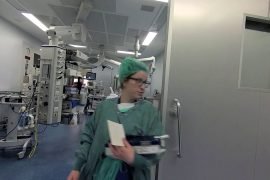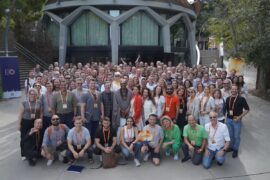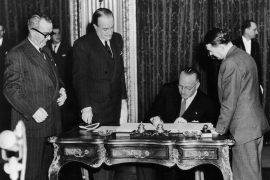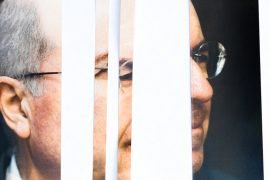[dropcap letter=”T”]
here are times when I feel like escaping from the city. Changing places and improvising new routes that take me away from those trips that, almost always with the autopilot, you end up repeating day after day. Not too long since last time I travelled. A few weeks ago, perhaps. I had no destination, nor the possibility of crossing oceans as many other times, but the desire to decelerate and move to a place far away in time but not in terms of kilometres from Barcelona. And that’s when I got the idea of traveling by train to the south of France. Specifically, to Avignon.
 The four hours that separate the two cities already represent a kind of journey. My destination could have been any other, but always by train. That slow travel, even if it is a high-speed train shared between Spain and France. Four hours of having nothing more to do than alternating glances through the window with the almost hypnotic reading of a good book. The pulsations fall almost by magic and you understand why literature insists so much on this means of transport as the scene of great adventures and encounters.
The four hours that separate the two cities already represent a kind of journey. My destination could have been any other, but always by train. That slow travel, even if it is a high-speed train shared between Spain and France. Four hours of having nothing more to do than alternating glances through the window with the almost hypnotic reading of a good book. The pulsations fall almost by magic and you understand why literature insists so much on this means of transport as the scene of great adventures and encounters.
Sober, but imposing, the Palais des Papes was the residence of up to nine different popes throughout the fourteenth century. It was a hectic century for the curia. I’m assaulted by real images of intrigues, betrayals and the seek for survival.
Almost without noticing it, one can be in Avignon and in its walled old town as it was in the 13th century, when this small city with a lavender smell began to focus the eyes of half the world. But before losing myself in its history I prefer to do it in the streets of coloured shutters. I especially like this type of architecture and urban organization, so common in the cities of southern France: they invite you to wander aimlessly. To discover, between facades covered with vines, almost secret squares in which there is always a white awning terrace from where to contemplate life passing by, in a city that once was the capital of Christianity. It was in the Middle Ages and even today one can feel the power that emanated back then.
It does not matter here what is your religion. Not even if you believe or not, to be able to admire the Palais des Papes. It is one of the largest medieval buildings that are preserved in Europe. Sober, but imposing, this Gothic building was the residence of up to nine different Popes throughout the fourteenth century. It was a hectic century for the curia. I’m assaulted by real images of intrigues, betrayals and the seek for survival. As soon as I crossed its walls I was transferred to the abbey where Umberto Eco placed the story of The Name of the Rose. Again, literature. The origin of our first great imaginary trips. I investigate in Google and, surprise, the story of the novel also happens in that same, hectic XIV century. I like it. I let myself go without haste.
The two hours that are needed to visit the Palace of the Popes calmly pass between immense ceilings and a total of 25 rooms in which the great ceremonies and feasts were celebrated, as well as the religious services. Some frescoes are preserved, they show the innovative character of the French and Italian paintings of that time. It is not necessary to have a great imagination or be an expert to be transported to that time.
The sunset is reflected in the calm waters of the Rhone, and Avignon becomes golden. It is the best time to end the meeting with History and head towards the bridge of Saint-Bénezet
The visit -at your ease- is done with a histopad in which you can activate the so-called doors of time in the purest adventure movie-style and move to a 3D reconstruction, totally scientific, of what life was like in there at the time of maximum apogee. From time to time, one looks up and reality returns to a group of self-absorbed adults making strange movements. They are opening chests, cabinets or reviewing the private rooms of the Pontiff.
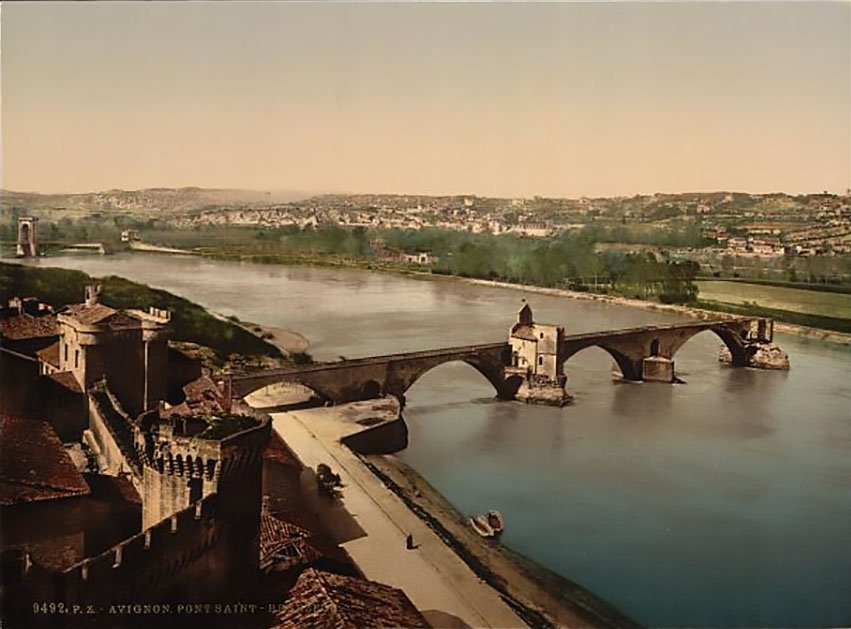
The tour takes you to the top of the Palace to see the privileged views of the city. The sunset is reflected in the calm waters of the Rhone, and Avignon becomes golden. It is the best time to end the meeting with History and head towards the bridge of Saint-Bénezet while your mind sings the popular song Sur le pont d’Avignon. There was a time when this incomplete construction was the only one that existed to cross the river between Lyon and the sea.
Van Gogh, Cézanne, Degas, Manet or Picasso are waiting for me at the Angladon Museum. Also, contemporary artists gathered in the palaces of Caumont and Montfaucon of the Lambert Foundation
Back in the centre of the city, one has to dine at a typical French bistro that generates such a contradictory feeling between the decadent and delicious. Almost all are about to close. I always forget that our timetables are not everyone’s. It’s winter, it’s cold and only a few brave people are still on the street. The carousel in the City Hall Square represents a nostalgic nod. It seems abandoned and the temptation to climb is considerable. I take the idea off my head and go to the Carré du Palais, an enotourism centre that opened in 2017 with the aim of making known the gastronomy and wines of the region. I ask for a glass of red wine denomination of origin Rhone, and without knowing how I end up talking about vineyards, wineries and life with Jean-Michel Guiraud, director of the place. He tells me that this summer he will move with his family to Martinique, to start a new life, and I tell myself that traveling is this. Unknown places and unexpected encounters.
I say goodbye with the promise of a visit to the bistro that Jean-Michel wants to open in the Caribbean and with two bottles of Rhone wine that I do not know where I’m going to store. The next day it’s time to visit two of the best museums in the region. Van Gogh, Cézanne, Degas, Manet or Picasso are waiting for me at the Angladon Museum. Also, the contemporary artists gathered in the palaces of Caumont and Montfaucon of the Lambert Foundation. Strolling through their rooms could be understood as another work of art.
On the way to the Market of Les Halles I stop at one of the many shop windows that smell sweet. I buy a handful of candied fruits thinking about keeping the smell of the city once back home. Also, a bunch of lavender. While I sit on a high stool, I watch the chef of the Cuisine Central prepare the dish of the day. All with fresh and proximity products. Today it smells like mushrooms. They are the dressing of a delicious roasted capon with spiced potato gnocchi.
The market is closing. I finish the glass of wine and for the last time I am about to walk along the more than three kilometres of wall that protects the essence of Avignon. I’m already at the train station. I smile. Ahead, four hours of travel courtesy of Renfe-Sncf to finish savouring the trip and to understand the reason for the relaxation that brings to our species the escape from our day to day. It does not matter if it’s only for two days. Sometimes, it’s enough.

